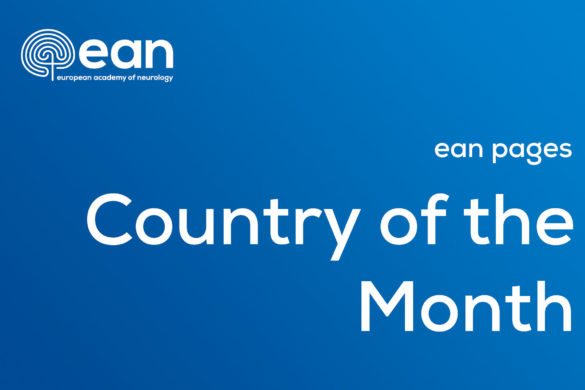The European Academy of Neurology is announcing its third congress from June 24th- June 27th at the RAI Congress Center in Amsterdam. We are expecting more than 6000 neurologists from Europe and all over the world for this outstanding annual event. The programme and the education committee of the EAN worked hard to create a program which will present cutting edge science and first class education for the general neurologist. The purpose is to present excellence in neurology and when the participants leave the congress they will know all about the current status and the important news in our field.
Category
Featured Slider
-
-
The Kingdom of the Netherlands, also known as Holland, has been densely populated from medieval times with the largest part of the population living in cities. Amongst these are many well-preserved gems like the university town of Leiden, where Rembrandt van Rijn was borne, Haarlem, the city of Frans Hals, the cheese town Alkmaar in the north, the Hansa town of Deventer in the east, the astute university city of Groningen in the north and Maastricht, the capital of the province of Limburg.
-
Paper of the MonthFeatured Slider
Paper of the month: Never too late to improve post-stroke aphasia?
June 1, 2017For June 2017, we have selected: Breitenstein C, Flöel A, Ziegler W, et al., for the FCET2EC study group. Intensive speech and language therapy in patients with chronic aphasia after stroke: a randomized, open-label, blinded-endpoint, controlled trial in health-care setting. Lancet Neurol 2017;389:1528-1538. Speech and language impairments are among the most disabling symptoms after a stroke. Patients with aphasia persisting 6 months (chronic aphasia) after a stroke are not infrequent (20%). Hence, the social and economic impact of chronic aphasia is substantial. -
Executive PageFeatured Slider
President’s Page: ICD 11 will finally classify stroke as a neurological disease
May 1, 2017The revision of the International Classification of Diseases (ICD) is a highly complicated process handled by experts in statistics at the WHO in Geneva. The influence of Neurological Societies onto the creation of a revision is through the accredited Societies which are for Neurology and Stroke the World Federation of Neurology (WFN) and the World Stroke Organisation (WSO). They are working within the Topic Advisory Group Neurology (TAGN) and can only make recommendations to the experts. April 2011 the TAGN advised to shift the section “Cerebrovascular diseases” covering all types of stroke from the “Diseases of the circulatory system” class (as it is in ICD-10) into the “Diseases of the nervous system” class (as it proposed in the draft ICD-11). This corresponds to a change of the statistical and legal placement of stroke from Internal Medicine to Neurology. This was then executed accordingly 5 years ago and stroke went under the neurological diseases (08) in the beta-version of the ICD-11. Neurologists all over the world agreed with this decision. -
Paper of the MonthFeatured Slider
Paper of the month: Idarucizumab to antagonize thrombin inhibitor dabigatran
May 1, 2017or May 2017 we have selected: Kermer P, Eschenfelder CC, Diener H-C, et al. Antagonizing dabigatran by idarucizumab in cases of ischemic stroke or intracranial hemorrhage in Germany – A national case collection. International Journal of Stroke 2017; doi: 10.1177/1747493017701944. The use of non-vitamin-K-antagonist oral anticoagulants (NOACs) to prevent stroke in patients with atrial fibrillation is increasing worldwide. -
Romania geographically belongs to Eastern Europe, but by history, tradition and culture it is perfectly expressing the values of an United Europe. With the Danube River as a large part of our Southern border (with Serbia and Bulgaria), the Danube… Continue Reading
-
The annual congress is the most important event of our Society. This year European and International Neurologists are invited to attend the third EAN congress in Amsterdam, The Netherlands, June 24-27. Literally hundreds of EAN-members are involved to in the preparation of this congress. I wanted to explain to our members how the congress programme is developed. In its third year of existence of the Society, some of the preparation has come to routine but most of the tasks are highly challenging year after year as one of the aims of the Society is to have new innovations every year.
-
Paper of the MonthFeatured Slider
Paper of the month: Smog as a risk factor for developing dementia
April 1, 2017For April 2017, we have selected: Chen H, Kwong JC, Copes R, et al. Living near major roads and the incidence of dementia, Parkinson’s disease, and multiple sclerosis: a population-based cohort study. Lancet 2017:389;718-726. Some studies have suggested that smog and noise can play a role in the pathogenesis of neurodegenerative disorders by inducing oxidative stress, neuroinflammation, microglia and neuronal antibody activation. -
EAN Congress newsFeatured Slider
Neurological News from the Netherlands IV – the land of the 3rd EAN Congress: Neuromuscular Centre the Netherlands
April 1, 2017 by Catharina G. Faber
Neuromuscular Centre the Netherlands
The field of neuromuscular diseases in the Netherlands is characterized by a longstanding tradition of collaboration between seven neuromuscular centres of the university hospitals. This collaboration has been formalised since 1993, when… Continue Reading
by Catharina G. Faber
Neuromuscular Centre the Netherlands
The field of neuromuscular diseases in the Netherlands is characterized by a longstanding tradition of collaboration between seven neuromuscular centres of the university hospitals. This collaboration has been formalised since 1993, when… Continue Reading -
Executive PageFeatured Slider
President’s page: Working for European Neurology: The partners of EAN in Brussels
March 1, 20172 years ago I have already highlighted the work of the European Affairs sub-Committee of the European Academy of Neurology. This is to more closely introduce the partners of EAN at this in Brussels. It is important that our members know about activities of our Society on a European level. -
Paper of the MonthFeatured Slider
Paper of the month: Migraine as a risk factor of perioperative ischemic stroke
March 1, 2017For March 2017, we have selected: Timm FP, Houle TT, Grabitz SD, et al. Migraine and risk of perioperative ischemic stroke and hospital readmission: hospital based registry study. BMJ 2017 Jan 10;356:i6635. doi: 10.1136/bmj.i6635. A higher risk of ischemic stroke has been found in patients with migraine, especially in those with migraine with aura. -
Executive PageFeatured Slider
President’s Page: 200 years since James Parkinson’s first description of the disease named after him
February 1, 2017It is unknown which of his many books James Parkinson (1755-1825) has considered the most important one. His 500 pages ‘Medical Admonitions’ for lay people, his ‘Chemical Pocket Book’ covering interesting facts on modern chemistry of the late 18th century, the ‘Hospital Pupil’ on the educational standards of physician education, his collection of minerals and fossils ‘Organic Remains of a Former World’ or any other of his many contributions. History has clearly shown that his most important contribution was his 1817 ‘Essay on the Shaking Palsy’ which celebrates its 200th birthday this year. -
Paper of the MonthFeatured Slider
Paper of the month: Faster recovery after concussion with early participation to physical activities in pediatric patients
February 1, 2017For February 2017, we have selected: Grool AM, Aglipay M., Momoli F., et al., for the Pediatric Emergency Research Canada Concussion Team. Association between early participation in physical activity following acute concussion and persistent postconcussive symptoms in children and adolescents. JAMA 2017:316;2504-2514. Practical recommendations in the management of concussion in pediatric patients have stressed the need of physical and cognitive rest starting immediately after the injury. -
Hungary is a unitary parliamentary republic in the Central Europe. It covers an area of 93,030 square kilometres, situated in the Carpathian Basin. With about 10 million inhabitants, Hungary is a medium-sized member state of the European Union. The official language is Hungarian. Hungary's capital and largest metropolis is Budapest.
-
Paper of the MonthFeatured Slider
Paper of the month: Safer effective treatment for Ménière’s disease
January 3, 2017For January 2017, we have selected: Patel M, Agarwal K, Arshad Q, et al. Intratympanic methylprednisolone versus gentamicin in patients with unilateral Ménière’s disease: a randomized double-blind, comparative effectiveness trial. Lancet Neurol 2016;388:2753-2762. Disabling vertigo attacks and hearing loss are characteristics of Ménière’s disease. In patients with severe and frequent vertigo spells, intratympanic injections of gentamicin have proved to be effective, but at the price of permanent vestibular damage and hearing loss.







